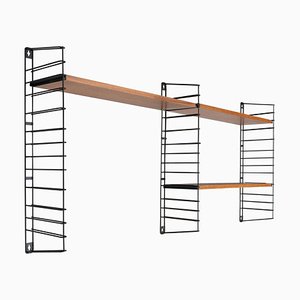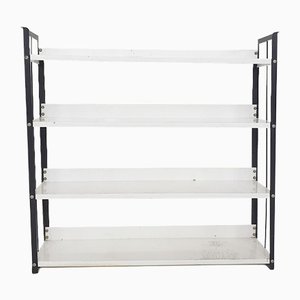
Dutch kitchenware company Tomado was founded as a small manufacturer of copper hooks in 1923 in Dordrecht, Holland by the Van der Togt brothers. In the years leading up to World War II, however, Tomado expanded its metalwork production to include functionalist cookware, knives, small appliances, and storage solutions. In the postwar era, Tomado’s modular, self-assembled, multifunctional wire shelves and racks became a near ubiquitous feature of Dutch homes.
Sometimes called “string furniture,” Tomado’s lacquered metal shelves have become highly collectible, especially the versions painted in the red-yellow-blue primary colors associated with the Dutch De Stijl movement. Another highly sought-after piece includes the SM05 Chair, which was produced as a collaboration between Pastoe and Tomado and designed by Dutch master Cees Braakman (1917-1995). This chair was released by Pastoe in 2011.
A Swiss kitchenware company called Metaltex absorbed Tomado in the 1980s, and the histories of many of Tomado’s designs remain in contention. Attribution for the design of Tomado’s now-iconic shelves, for example, is cited as A. D. Dekker, Adriaan Dekker, or Mr. Van Mieren.
Notably, the company’s headquarters building, known as Tomado House, still stands in Dordrecht as a monument to postwar modernism. Designed by Dutch architect Huig Maaskant in 1958 and completed in 1962, it was, at the time, the most modernist building in the Netherlands, characterized by a minimalist, cantilevered white-box form. The building today functions as an office building, recently renovated by local firm EMG Architecten.




